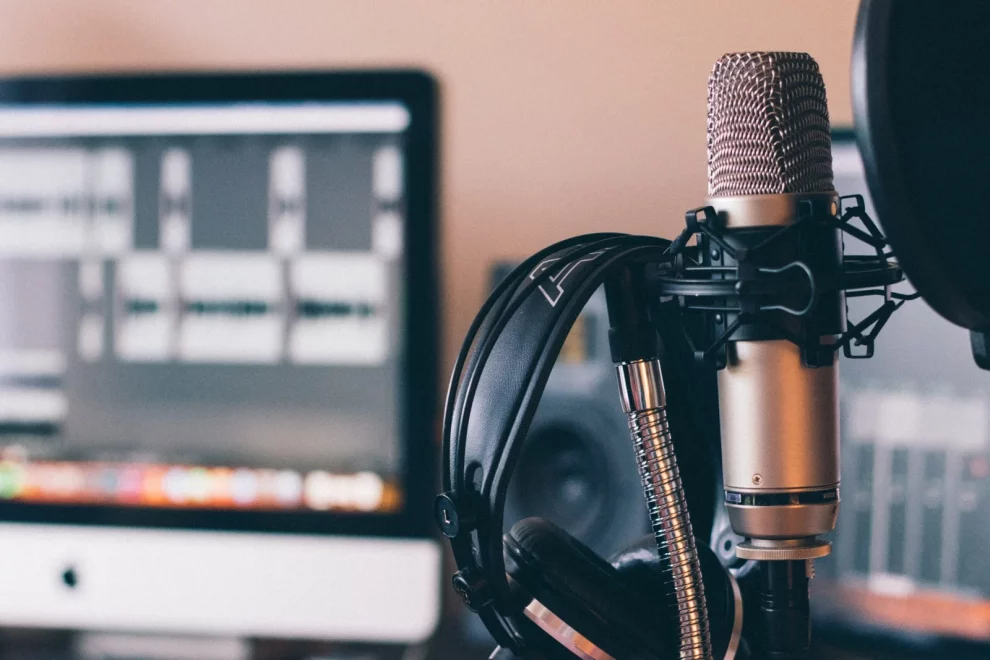Podcasting has exploded in popularity thanks to its intimate format, diverse range of topics, and accessibility. But starting a successful podcast that connects with listeners takes strategic planning.
This in-depth guide will teach you how to:
- Identify your podcast’s niche and unique angle
- Set up a professional-quality recording studio on any budget
- Craft binge-worthy episodes with compelling content
- Distribute your podcast widely using platforms and aggregators
- Promote your show and engage listeners across social media
- Collaborate with others to expand your reach
- Analyze performance and refine your strategy over time
Follow this podcasting roadmap from pre-production planning to post-launch optimization, and you’ll gain the knowledge to turn your audio aspirations into a thriving listening community.
Part 1: Building Your Audio Arsenal for Podcast Recording
Step 1: Find Your Niche and Identify Your Target Audience
Before recording your first episode, spend time uncovering your podcast’s core identity and the specific listener community you want to serve. Ask yourself:
- What underserved needs or interests will my podcast fulfill?
- What unique perspective or voice can I contribute to my niche?
- Who is my ideal listener and what do they care about?
Conduct market research on leading podcasts in your field to spot potential gaps in topic coverage. Your niche should be focused enough to deeply engage a defined target audience without being so narrow that finding listeners is difficult.
Step 2: Gear Up with Quality Podcast Recording Equipment
While amazing content is the core ingredient, poor audio quality can negatively impact listenership. Invest in equipment to match the sound to your vision.
Podcast Recording Software and Hardware Essentials
- Microphone: Choose a USB mic or XLR mic and audio interface with clear sound for speech. Purchase a pop filter to reduce plosives.
- Headphones: Invest in over-ear headphones to closely monitor audio while recording.
- Digital Audio Workstation (DAW): Consider software like Audacity (free) or Adobe Audition for editing.
- Soundproofing: Use furniture, blankets, and foam to minimize background noise.
With the fundamentals handled competently, you can always upgrade equipment as your show progresses.
Step 3: Develop Podcast Episodes with Compelling Content
Consistently remarkable content will turn one-time listeners into devoted fans. As you storyboard each episode, consider:
- Scripting some portions while keeping others conversational
- Structuring segments to maintain an engaging flow
- Researching thoroughly and incorporating diverse perspectives
- Adding your unique personality and flair
- Experimenting with solo episodes, interviews, panels, storytelling formats, and more
Plan out topics, talking points, questions, and audio clips before recording. Sketching an episode blueprint will help you use recording time efficiently.
Step 4: Record Podcast Episodes Like a Pro
When it’s showtime, shift into performance mode:
- Speak confidently, conversationally, and enunciate clearly
- Minimize vocal fillers like “uh” and “um” with strategic pauses
- If interviewing, balance guest storytelling with thoughtful questions
- Record multiple takes until satisfied or redo sections as needed
Remember that most mistakes can be edited later. Stick to the content plan you outlined while allowing organic moments to blossom.
Step 5: Refine Your Podcast with Professional Editing
Post-production polishing takes episodes from rough drafts to radio-ready masterpieces by:
- Removing unwanted noises like mouth clicks
- Trimming silences and filler words for better pacing
- Adding intro/outro music beds, sound effects, and transitions
- Normalizing audio levels across interviewees
Even basic editing like noise reduction can drastically boost production quality. Allot time for meticulous editing with software like Audacity, Hindenburg, Pro Tools, or Adobe Audition.

Part 2: Distributing and Promoting Your Podcast
Step 1: Research Podcast Hosting Platforms
Major platforms each have unique audience demographics, content policies, and monetization options. When weighing distribution strategies, compare factors like:
- Audience size and engagement metrics
- Content guidelines and approval processes
- Ad insertion options, subscriber models, cross-promotion, etc.
- Data analytics provided on listener demographics and behavior
Top podcast platforms include Apple Podcasts, Spotify, Google Podcasts, and Stitcher. You can also use aggregators like Buzzsprout to distribute your show across various platforms.
Step 2: Optimize Online Visibility
With over two million podcasts in existence, standing out from the crowd is imperative. Boost discoverability by:
- Crafting catchy podcast artwork, episode titles and descriptions
- Front-loading key information
- Using strategic keywords related to your niche in titles, summaries, transcripts, and shownotes
- Ensuring accessibility with transcripts or captions
Optimizing metadata elements will improve search visibility and help listeners find your show. Prioritize clear, accurate representations of episode content.
Step 3: Promote Your Podcast on Social Media
Once you begin releasing episodes, drive listeners to subscribe by promoting your show across social platforms like:
- YouTube
- TikTok
Share teasers, behind-the-scenes clips, pictures, polls and episode snippets. Engage followers with relevant hashtags, playlist suggestions, reactions to trending news, Q&As and more. Offer giveaways and contests to incentivize sharing. Welcome new listeners by promoting your podcast trailer or best episodes.
Step 4: Use Cross-Promotion and Guest Appearances
Network and collaborate with podcasters in similar niches by:
- Exchanging guest interviews on each other’s shows
- Co-hosting special episodes to fuse your listener bases
- Sharing and recommending complementary shows
- Providing audio clips for partners to feature
Joint promotion compounds audience reach and exposes podcasts to engaged fan bases outside their own. Seek reputable podcasters with shared values and goals for mutually beneficial partnerships.
Step 5: Foster Community through Listener Engagement
Prioritize building personal connections with your audience by:
- Following up on listener emails, comments and messages
- Incorporating fan feedback into future episode topics or segments
- Co-creating content through polls, Q&As and contests
- Joining niche Facebook groups and relevant subreddits
Responsive, authentic engagement breeds loyalty more than any marketing tactic alone. Consistent communication and acknowledging supporter contributions can deepen attachment to your show over time.
Step 6: Track Analytics to Refine Your Podcast Strategy
Analytics provide invaluable intelligence on how your listeners actually consume and react to content. Review metrics like:
- Downloads and listening time per episode
- Subscription gains and losses
- Episode completion rates
- Audience demographics
- Traffic sources
- Reviews and ratings
Identify best-performing episodes as well as content misses. Cater to rising listener segments. Continuously evolve your podcast based on concrete data versus assumptions.
Step 7: Choose the Right Monetization Model
Once you’ve built a sizeable, loyal audience, explore potential revenue streams like:
- Host-Read Ads: Pre-roll/mid-roll advertisements
- Sponsorships: Affiliate links, dedicated sponsor spots, product co-creation opportunities
- Memberships: Bonus or exclusive content for paying subscribers, community access
- Merchandise: Branded t-shirts, mugs, posters, etc.
Weigh options compatible with your audience, content style and personal principles. Avoid over-commercialization.Remember, chasing income before establishing listener loyalty rarely succeeds long-term.
Beyond the Basics: Additional Tips
Take your podcast even further with these pro tips:
- Repurpose content: Grow your authority by adapting episodes into YouTube videos, blog posts, and social snippets.
- Attend podcasting events: Network in-person at conferences and meetups to connect with fellow hosts, pitch to sponsors, and stay inspired.
- Persist through early struggles: Consistency conquers all. Stick to reliable content schedules, production values, and community interaction as you build traction.
Now you’re equipped with a complete roadmap for launching a podcast poised to flourish. Simply follow the steps from niche validation to listener engagement, and your show will be primed for real-world impact. Time to step up to the mic and make your unique voice heard!
















Add Comment